Before making our way across the border into Colombia, we stopped for two nights in Otavalo, Ecuador. Otavalo is a little town that is most famous for it’s markets every Saturday morning and early afternoon. As we walked through town last night, I knew I was going to enjoy our short stay here. While the Ecuadorian coast was nice, and the historical center of Quito very pretty, I think the beauty of Ecuador lies in it’s small towns inland, or in the mountains. I loved Mindo, I had a feeling I was going to love Otavalo as well. It made me feel a little bad we spent most of our time in Ecuador studying Spanish instead of traveling around more smaller towns! We spent the morning at Otavalo’s main market, and then the afternoon searching down the Peguche waterfall outside of town.
It seemed as if the entire city shut down and morphed into a giant market. Granted, the city wasn’t that big, but when all of the streets are suddenly covered in tents and stalls selling everything from skeins of yarn to gold bracelets to pre-Colombian statues to slabs of pork on a plate for a quick lunch it felt huge and delightfully overwhelming. Andrew and I strolled around taking it all in, taking pictures, and seeing what was for sale before we bought anything. We could have bought small and unbreakable things, but we went straight for the pre-Colombian statues (some of which you can see below). More specifically, Andrew wanted them. It’s official. I have rubbed off on him. At least when it comes to buying (and subsequently having to carry around) breakable, slightly heavy and hard to pack souvenirs.
We’ve also seen reproductions based off of Ecuadorian artist, Oswaldo Guayasamín‘s work throughout Ecuador. They were everywhere. In our guesthouses, in restaurants, even on the walls in our Spanish school in Quito. I was hoping I’d be able to find a few prints or hear more about the artist before we left Ecuador. Fortunately the market offered lots of reproductions and we were able to hop from stall to stall pricing out different ones we liked and eventually decided on a few that our future walls simply will not be able to live without. Done shopping, we strolled through the food market (always one of my favorite areas of a market) and took pictures before ducking into one of the restaurants for lunch.

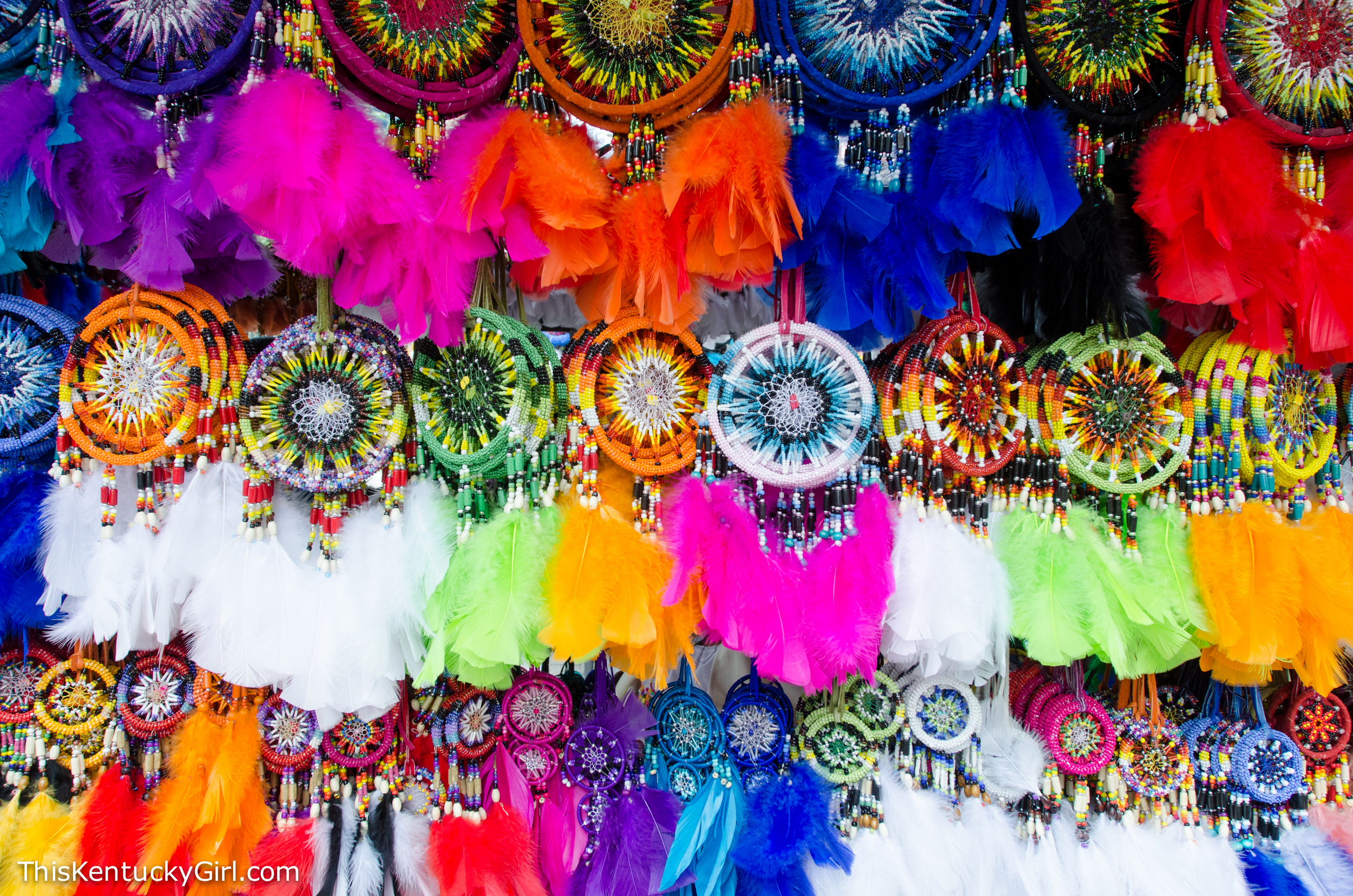
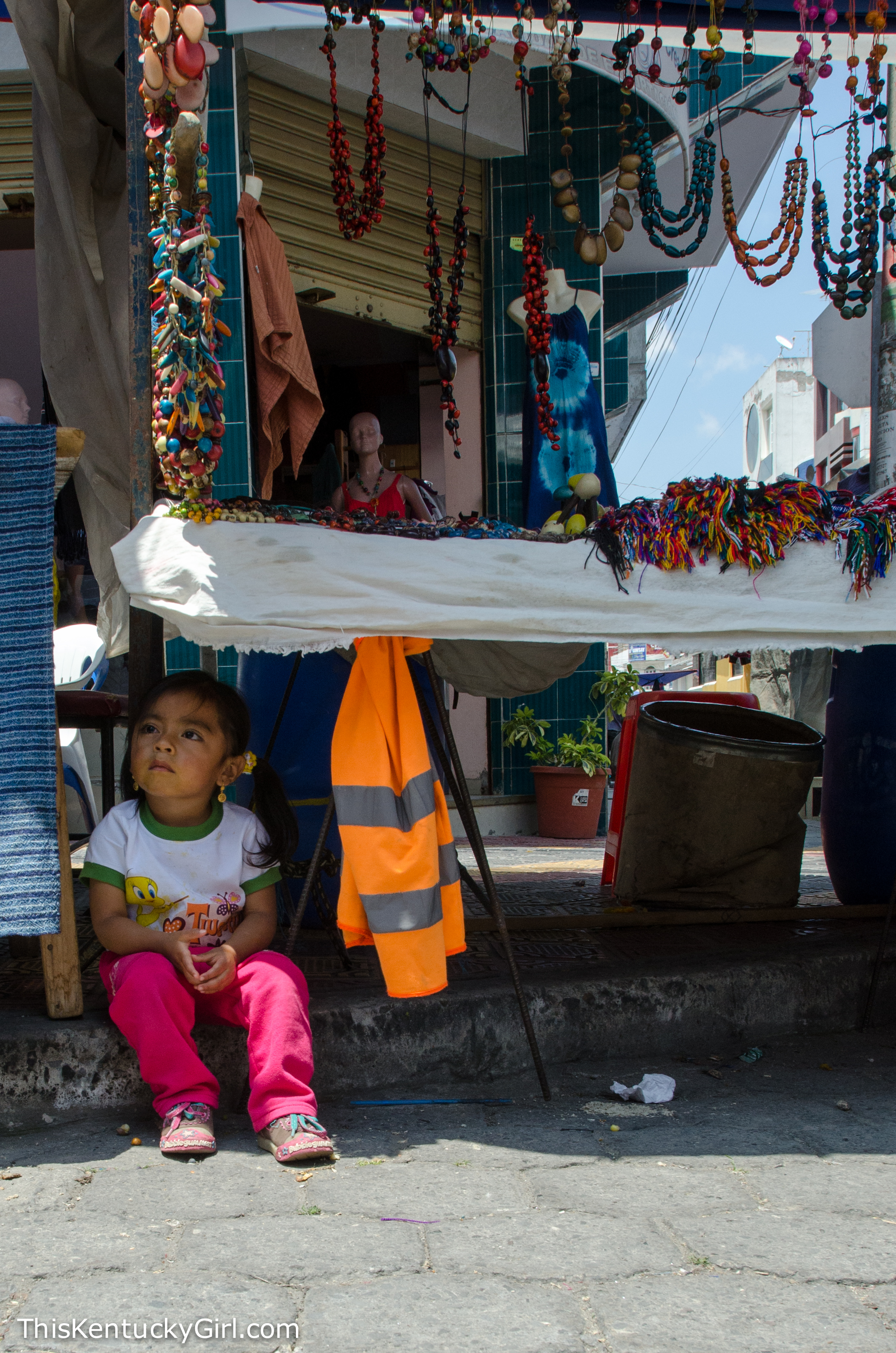
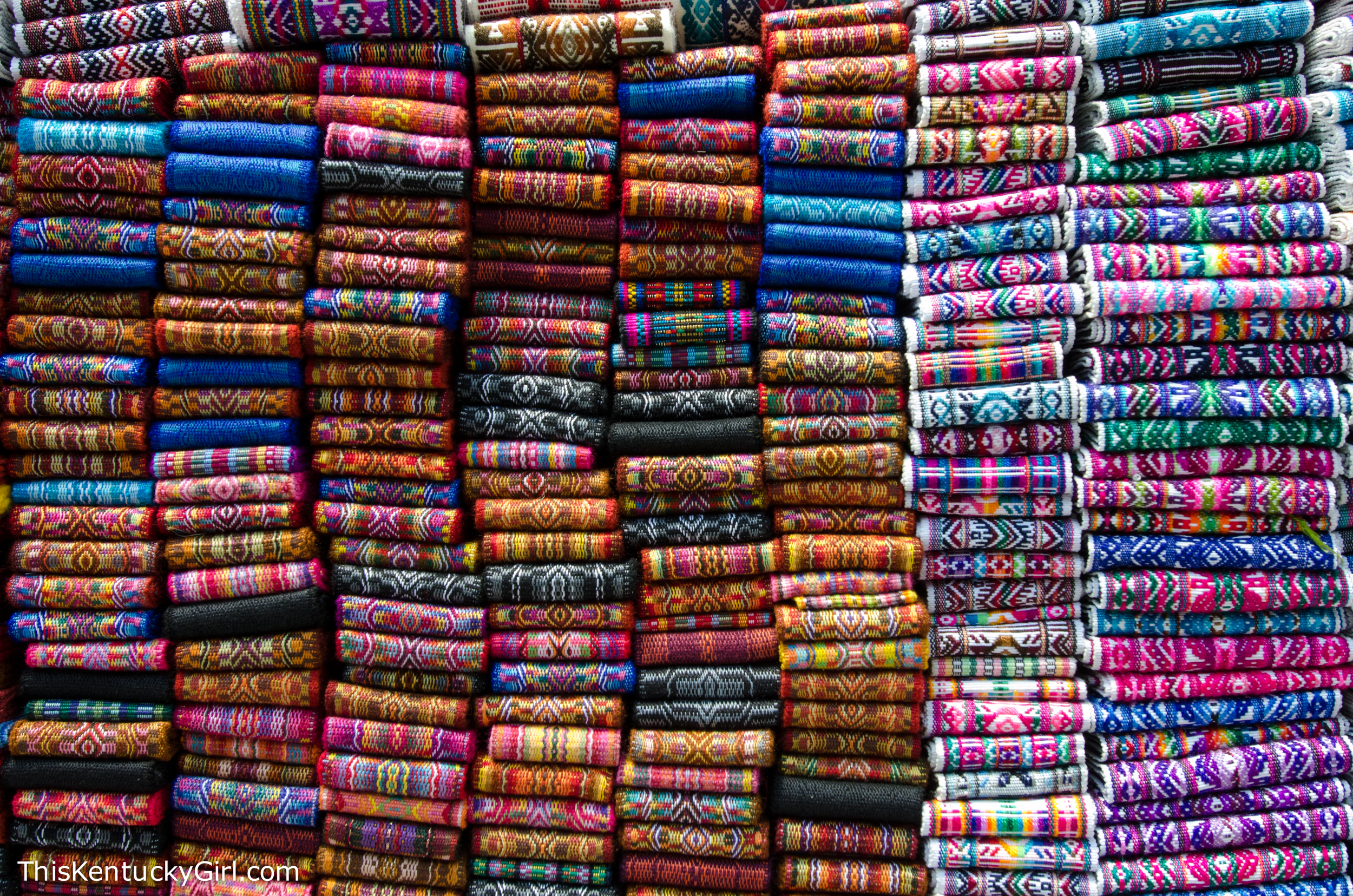
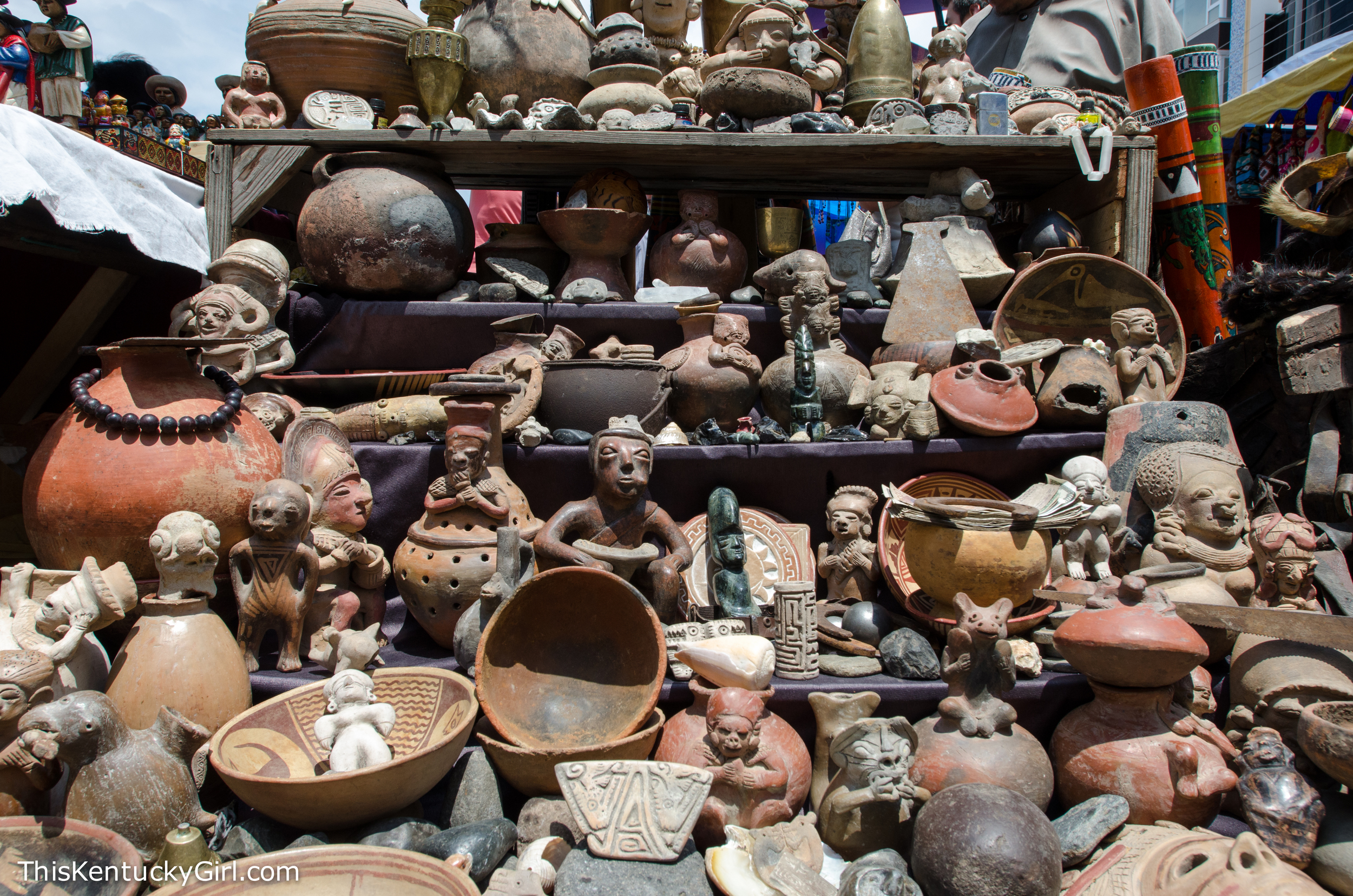
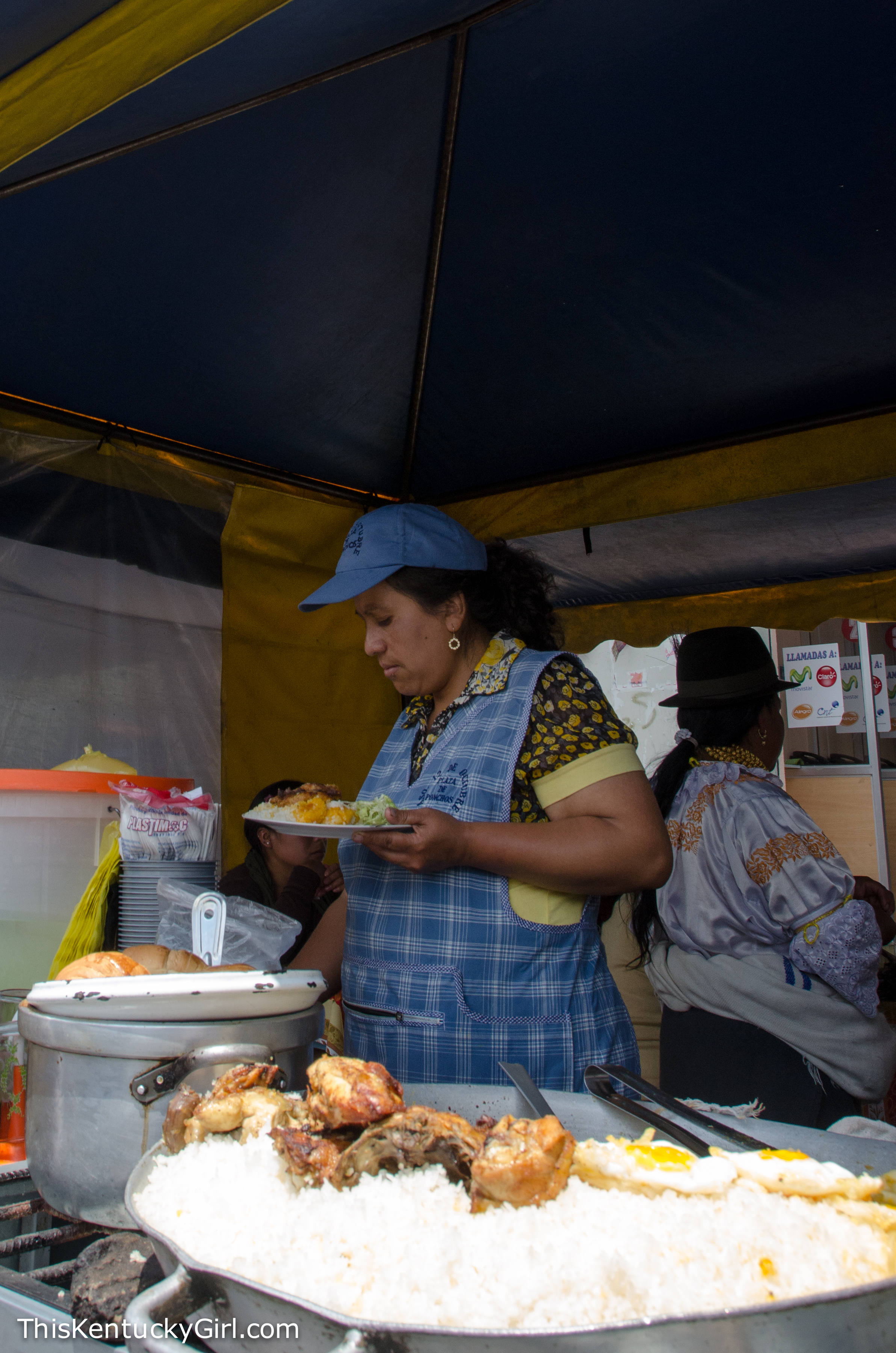
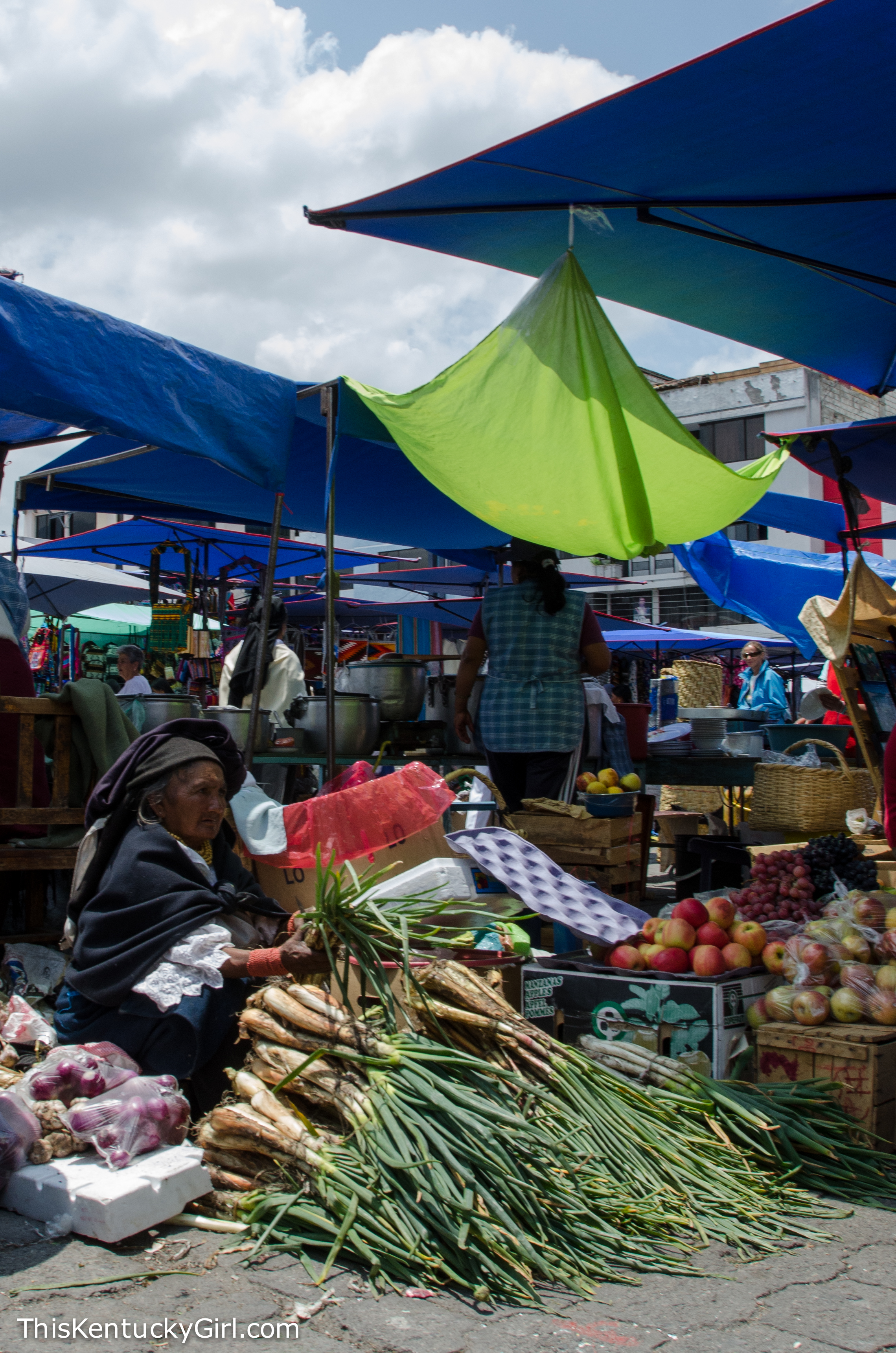
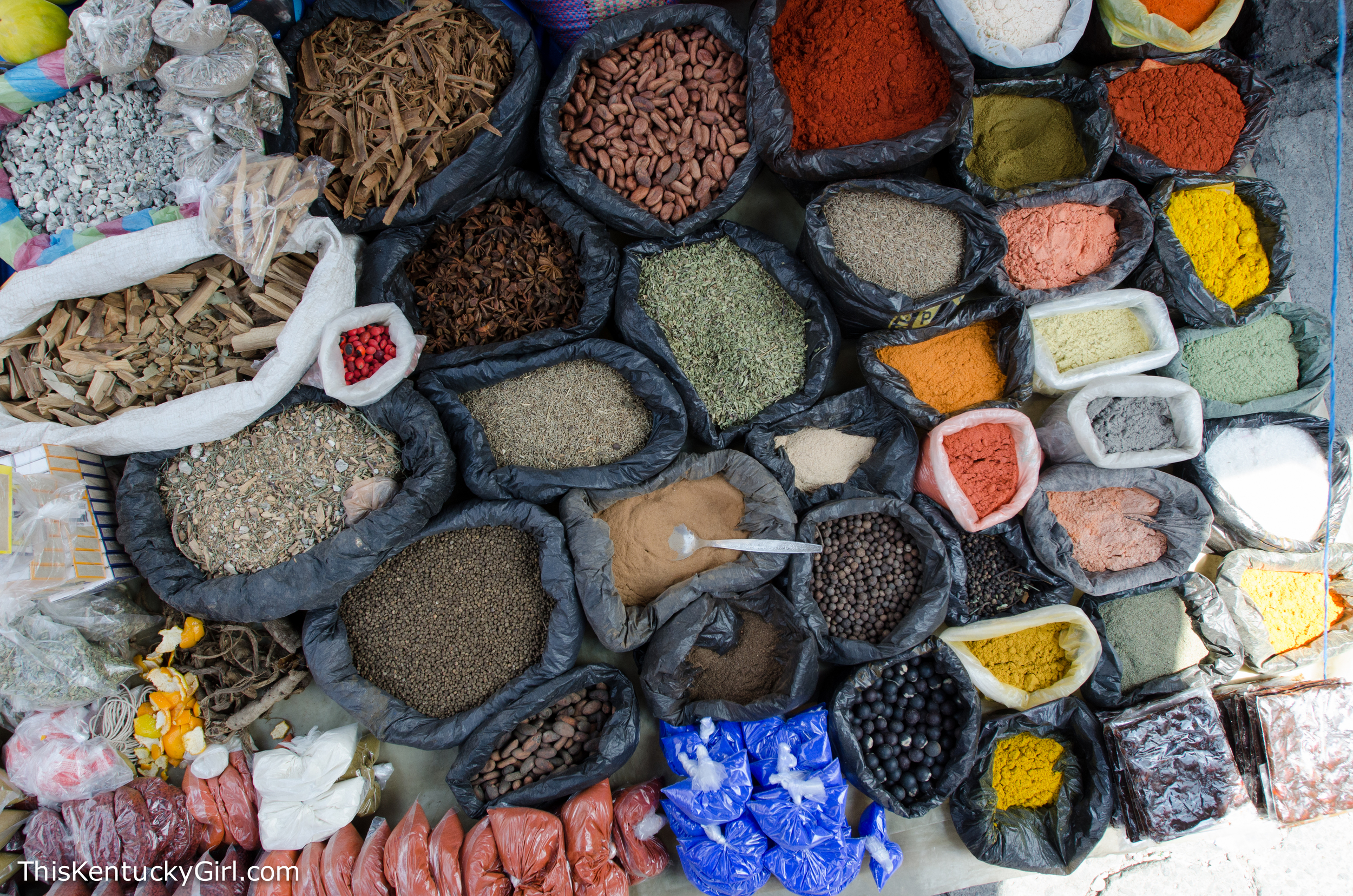
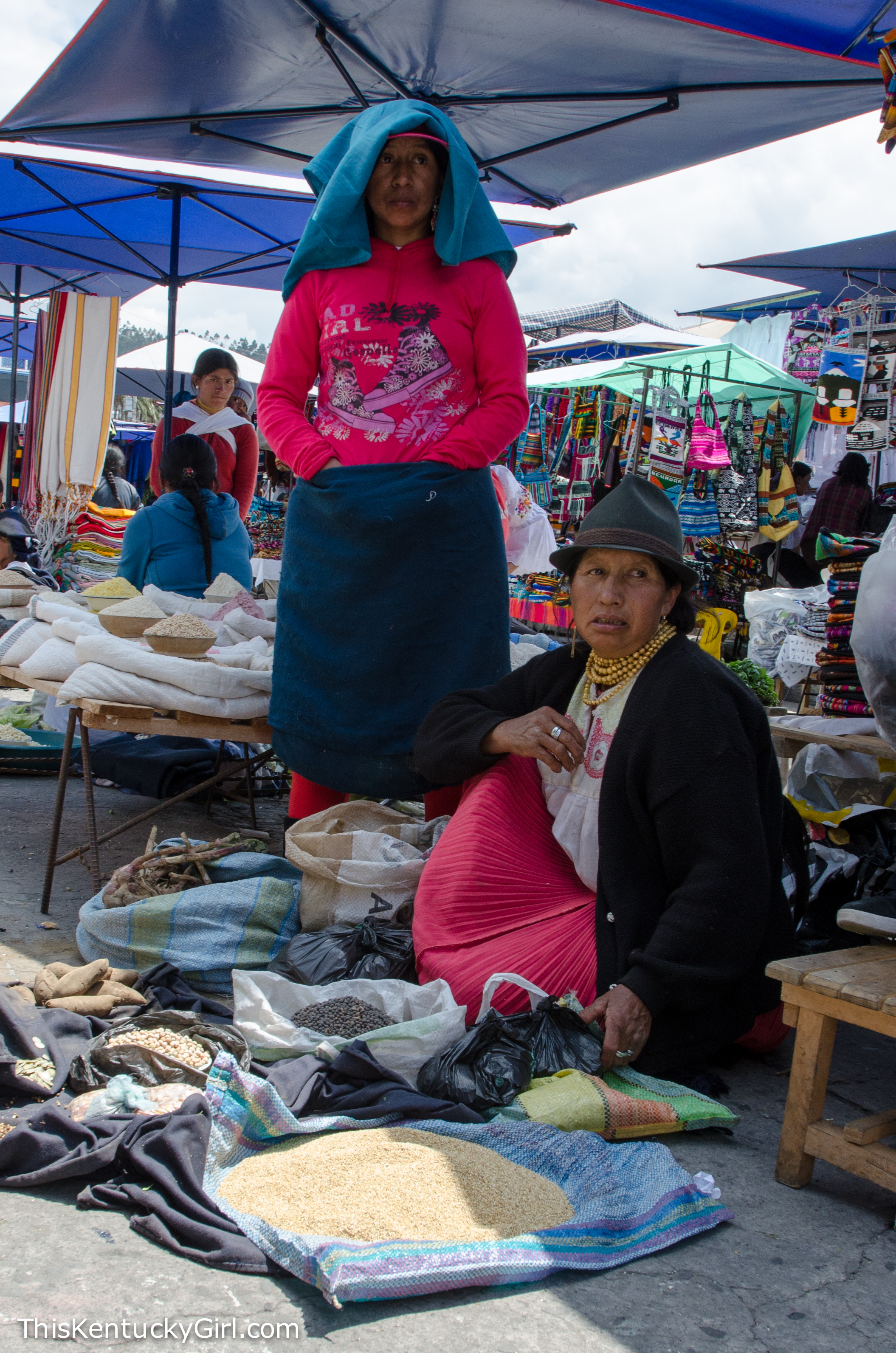
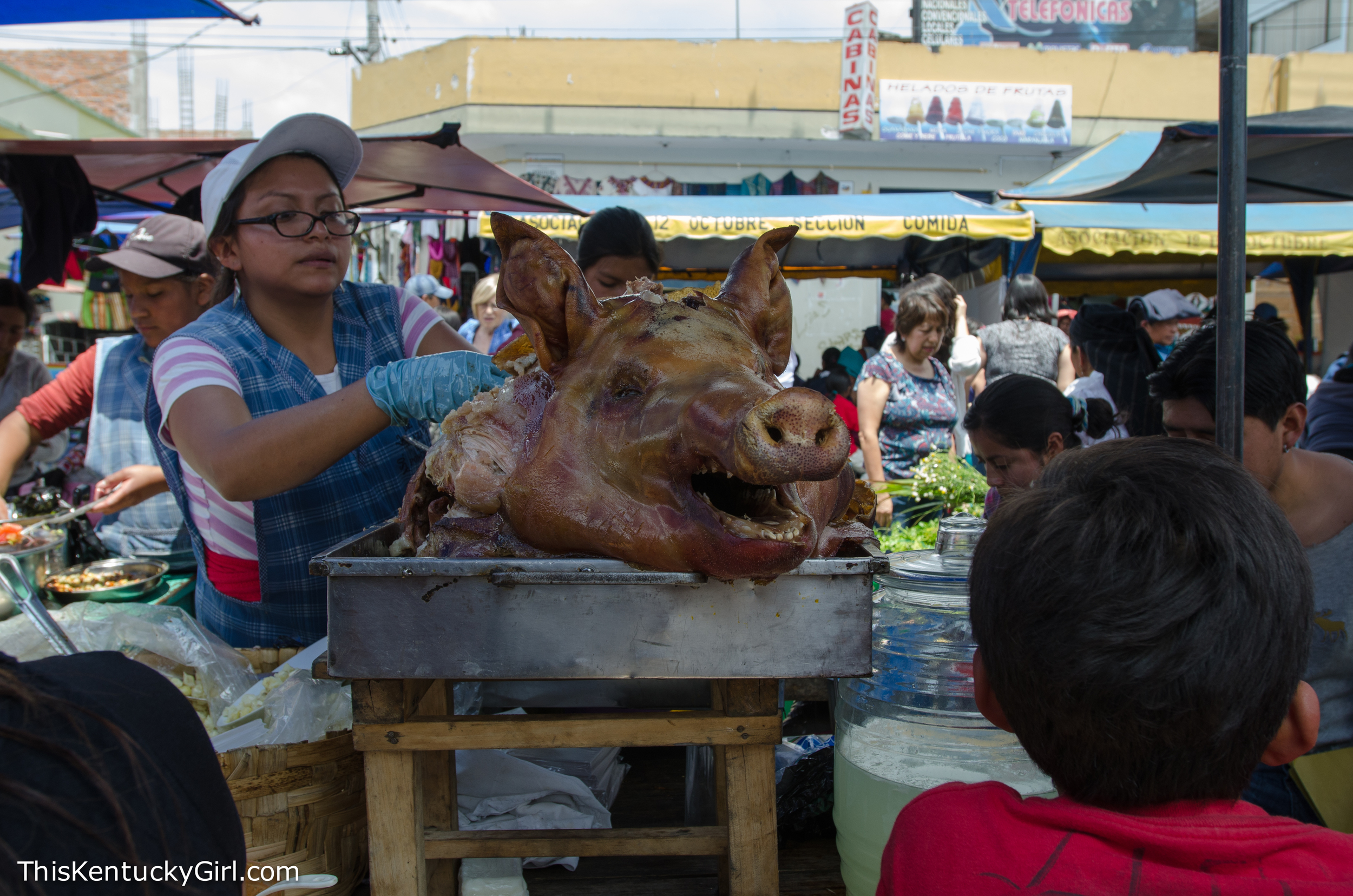
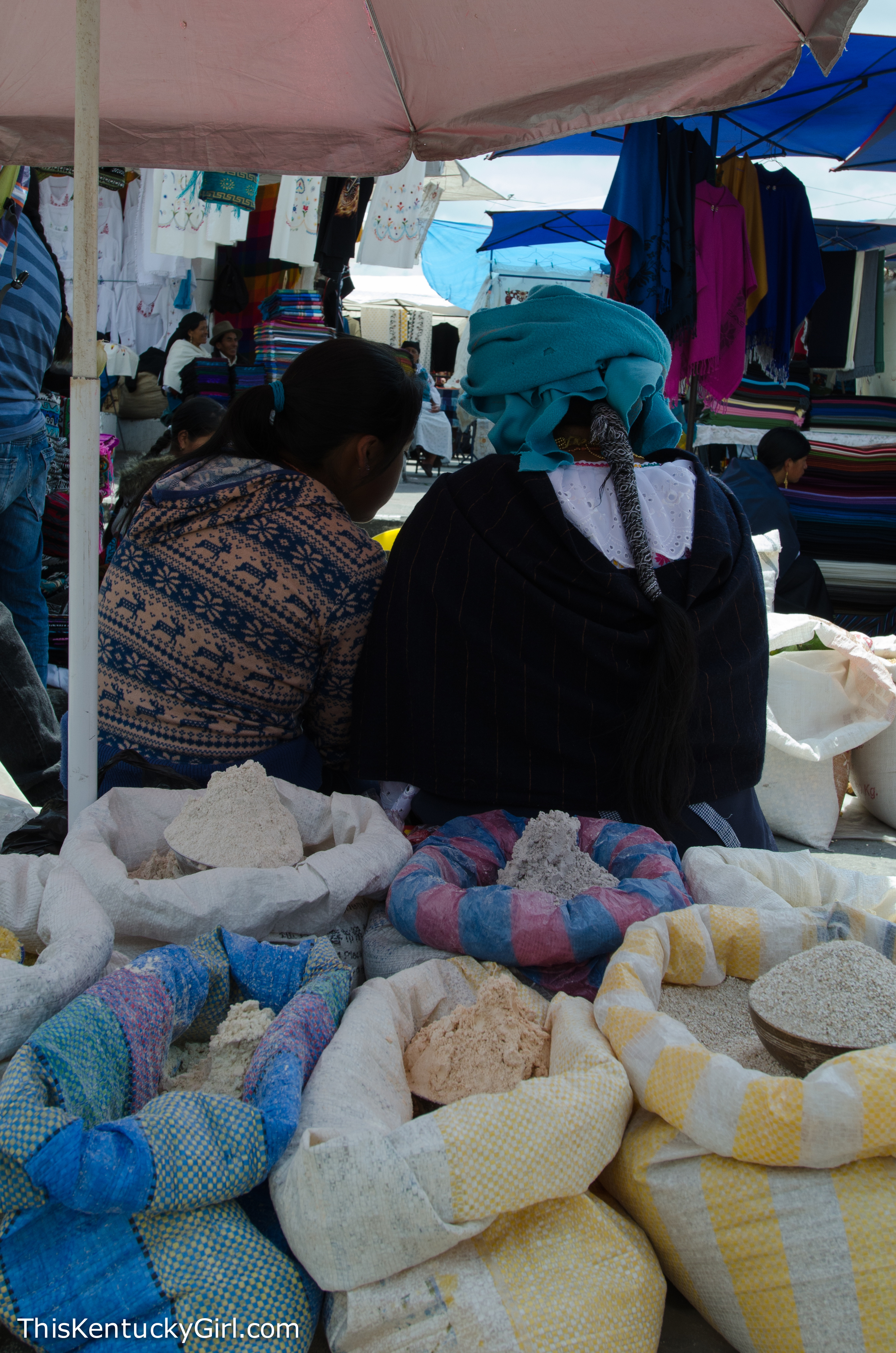
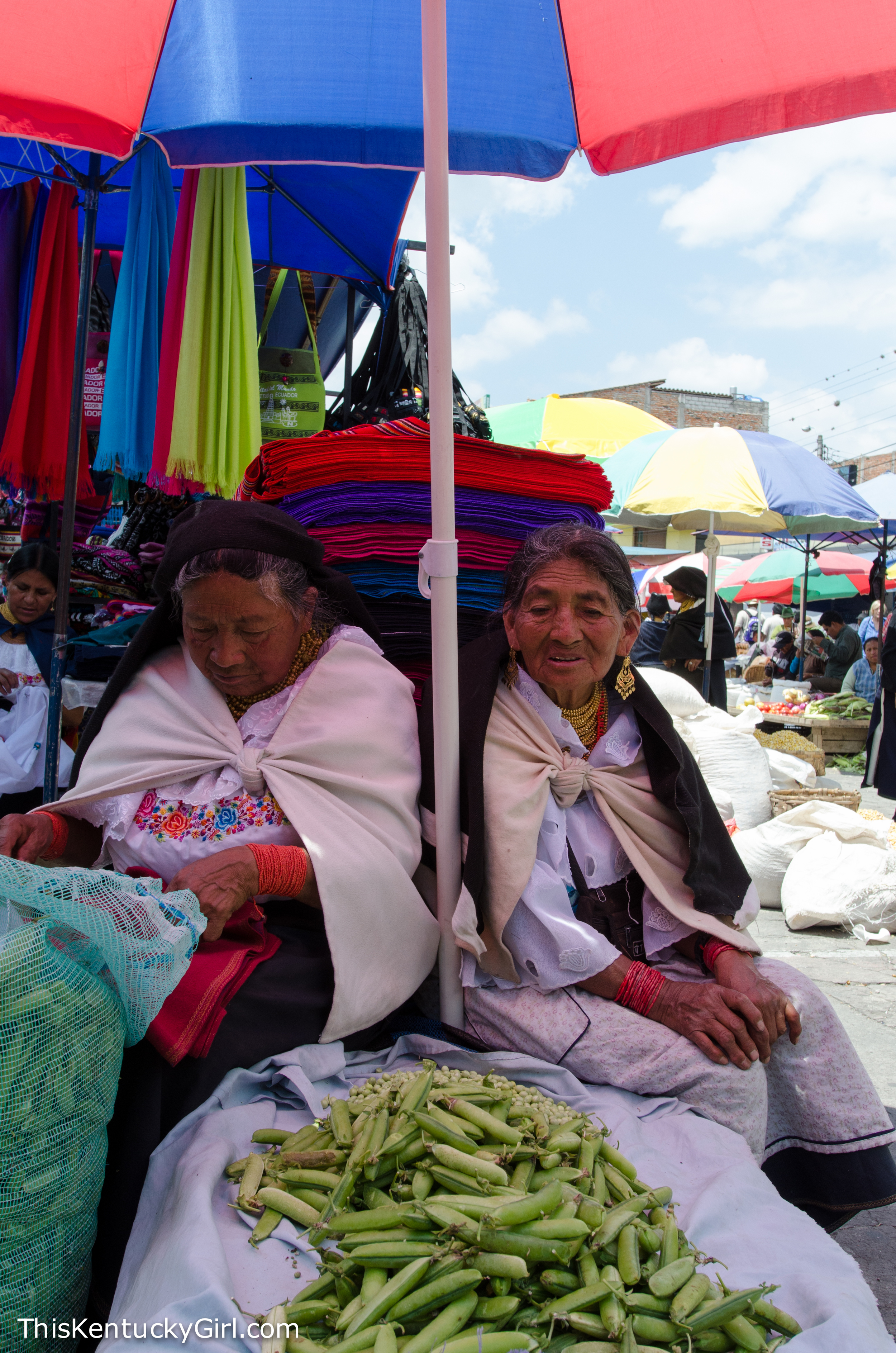
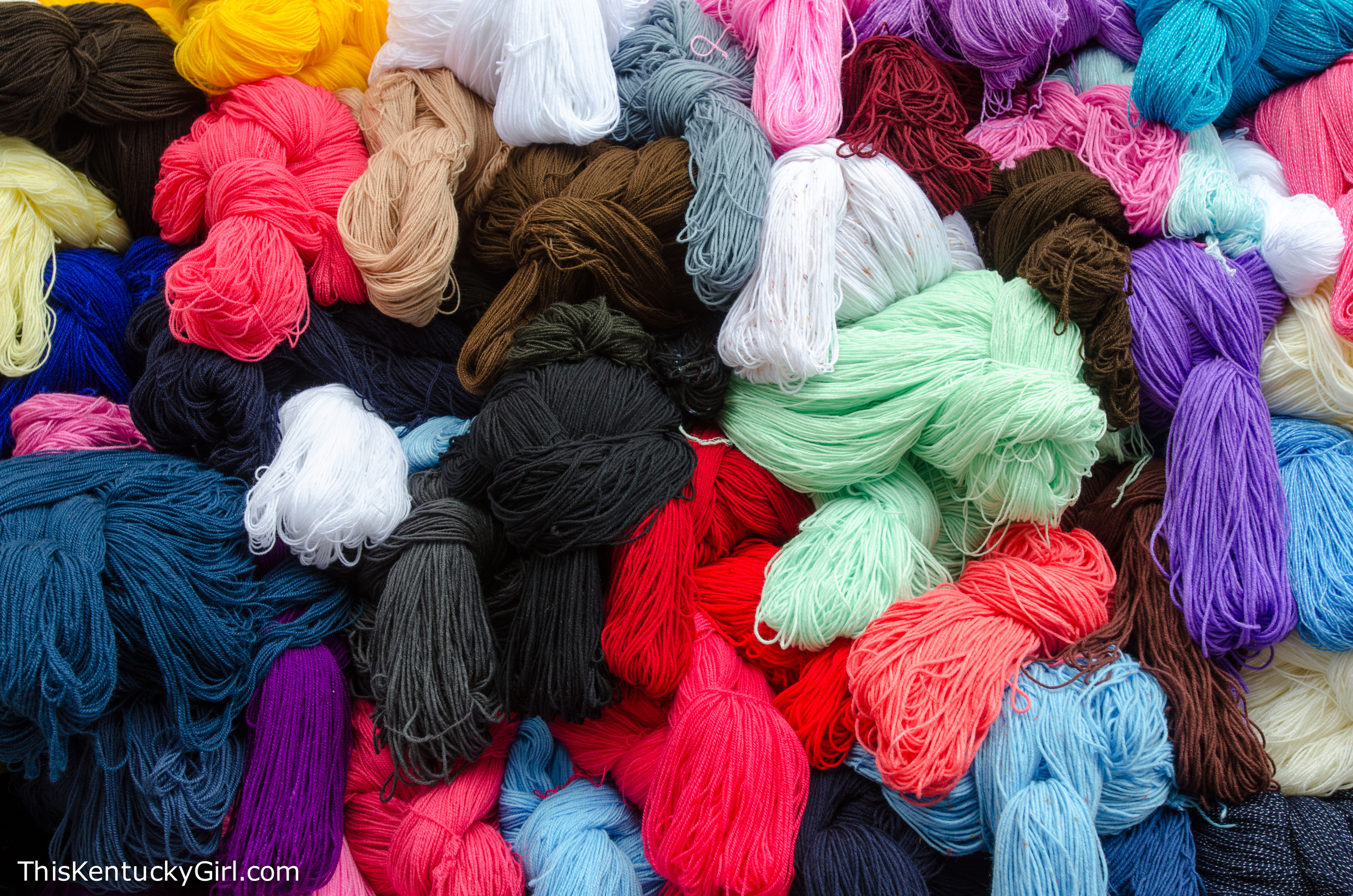
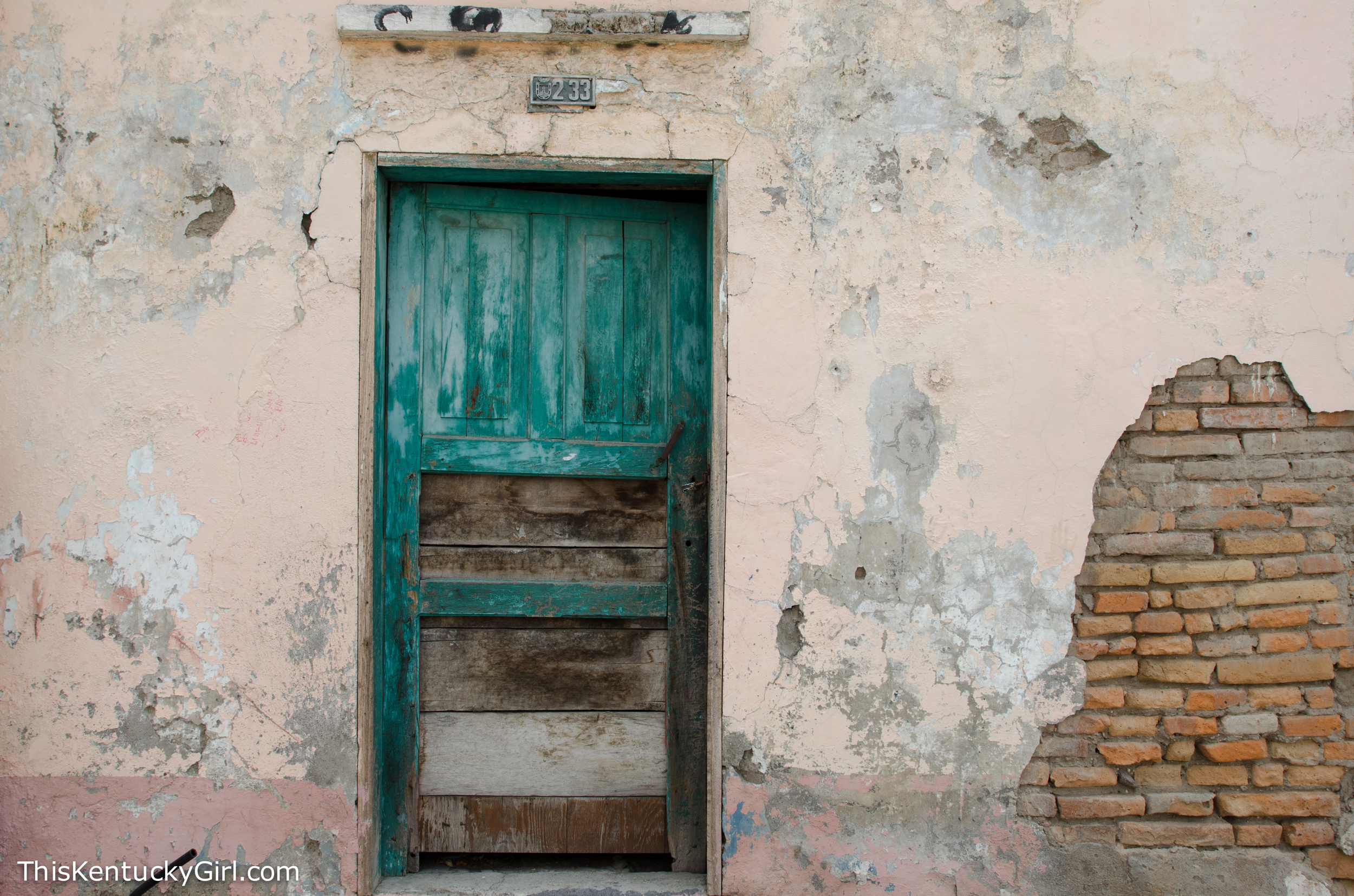
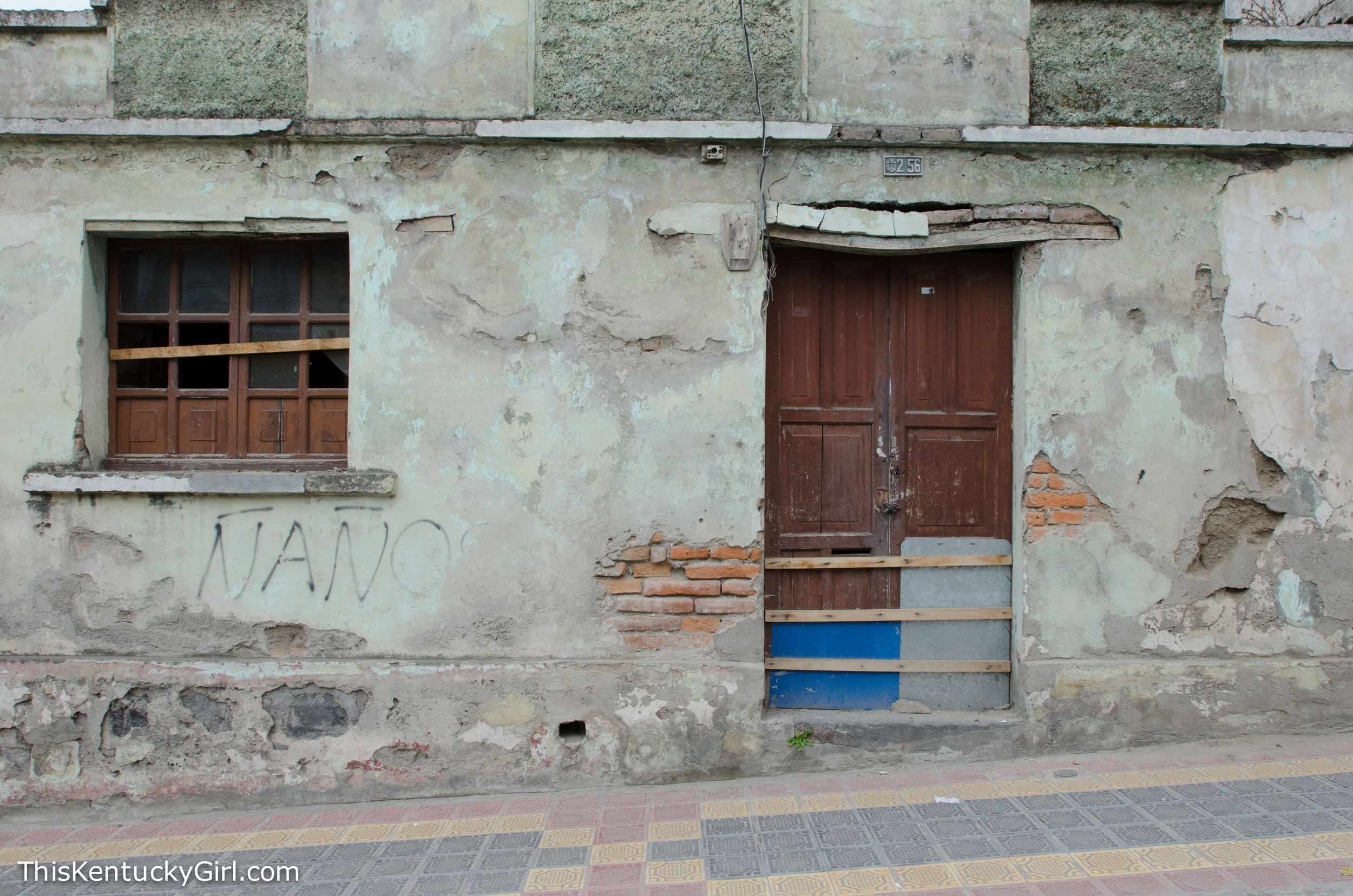
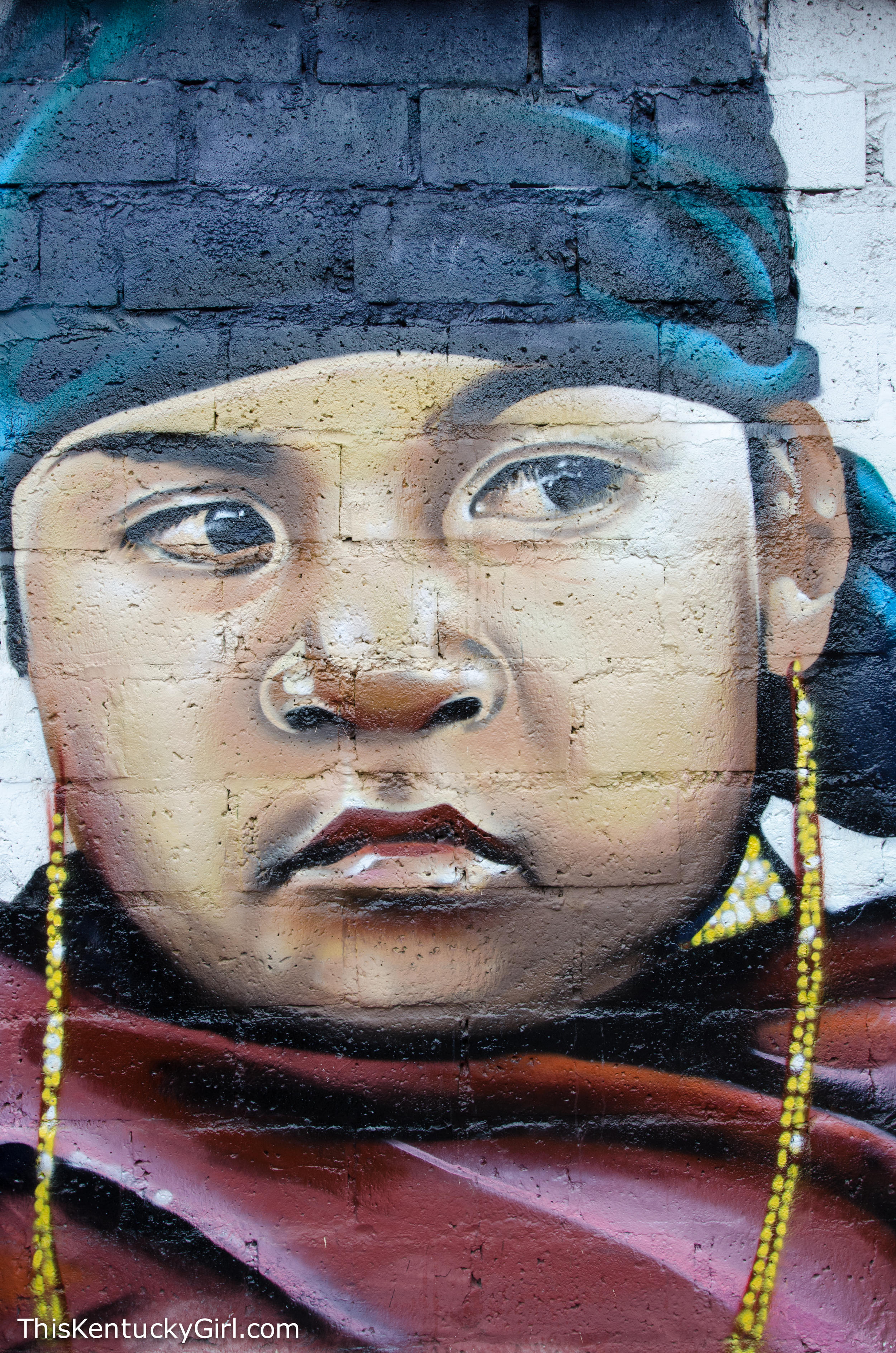
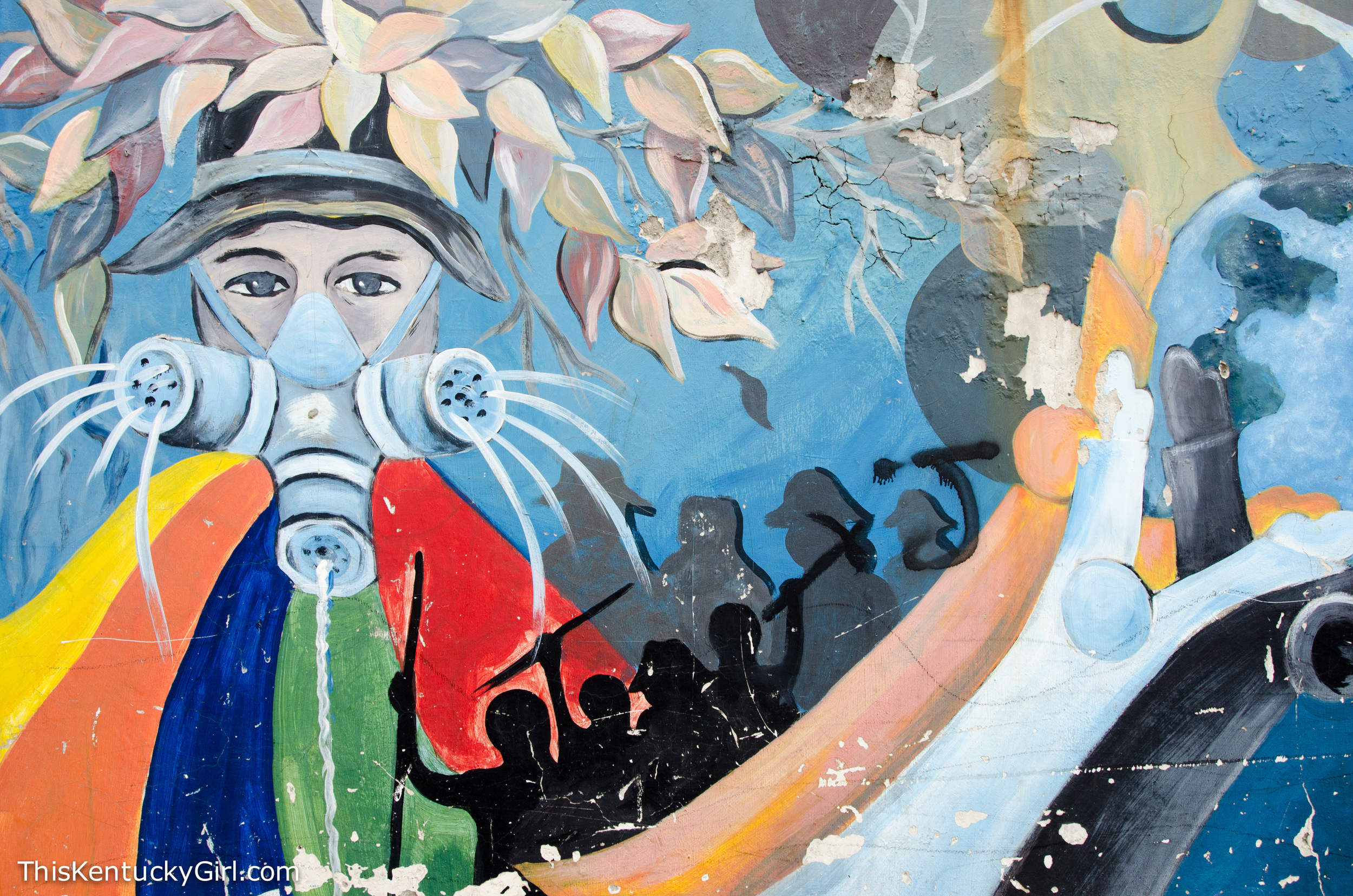
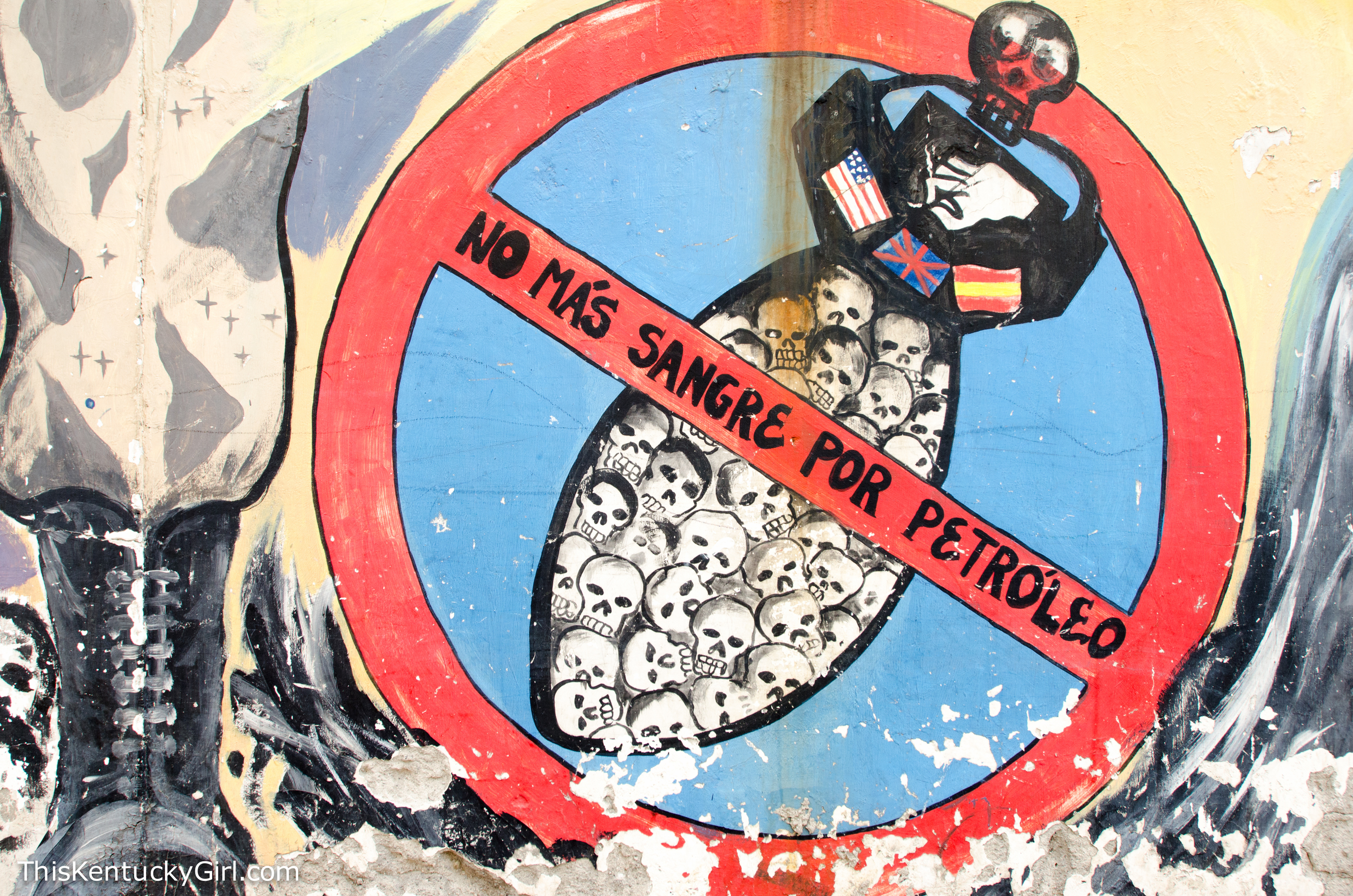
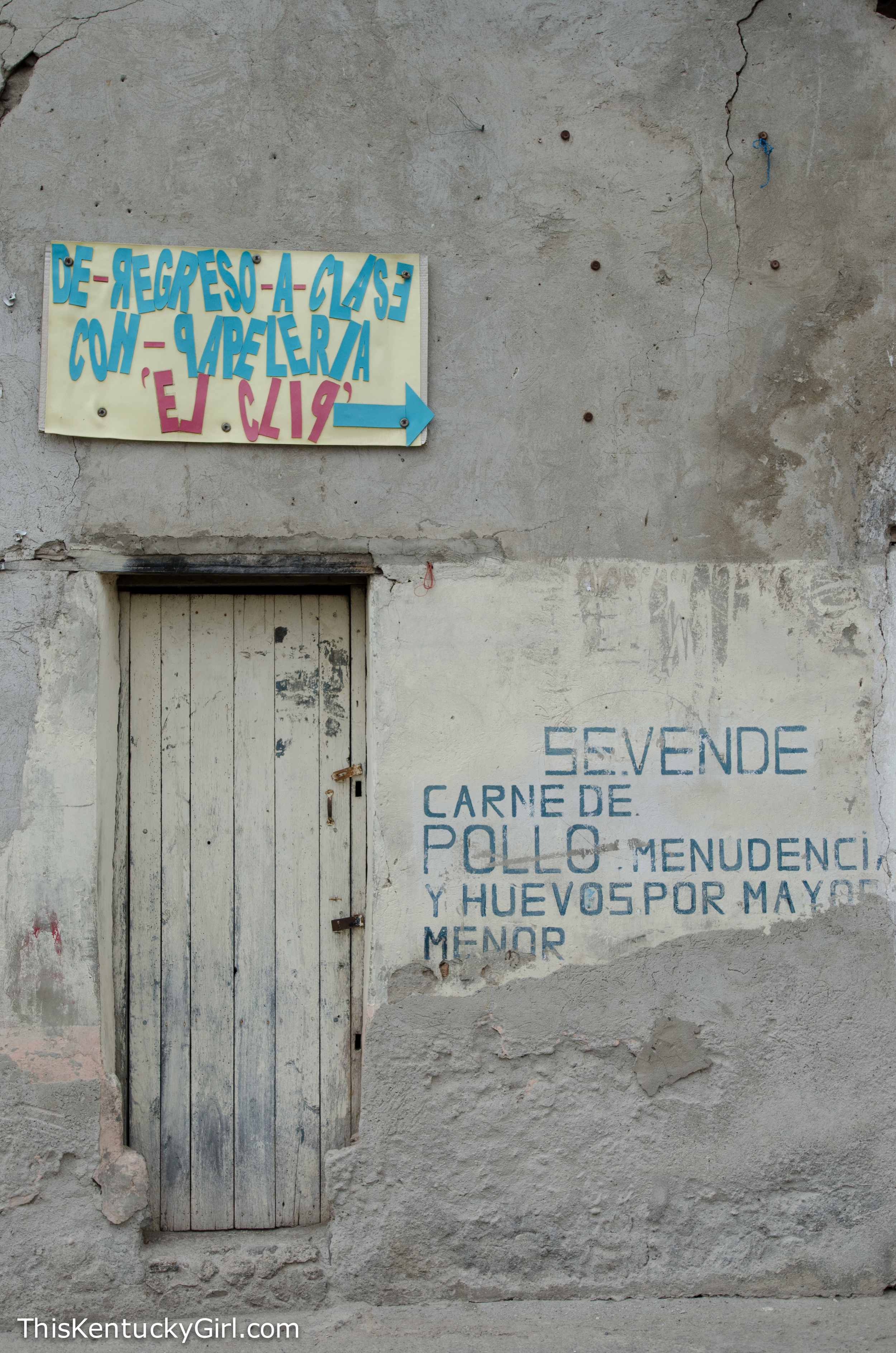
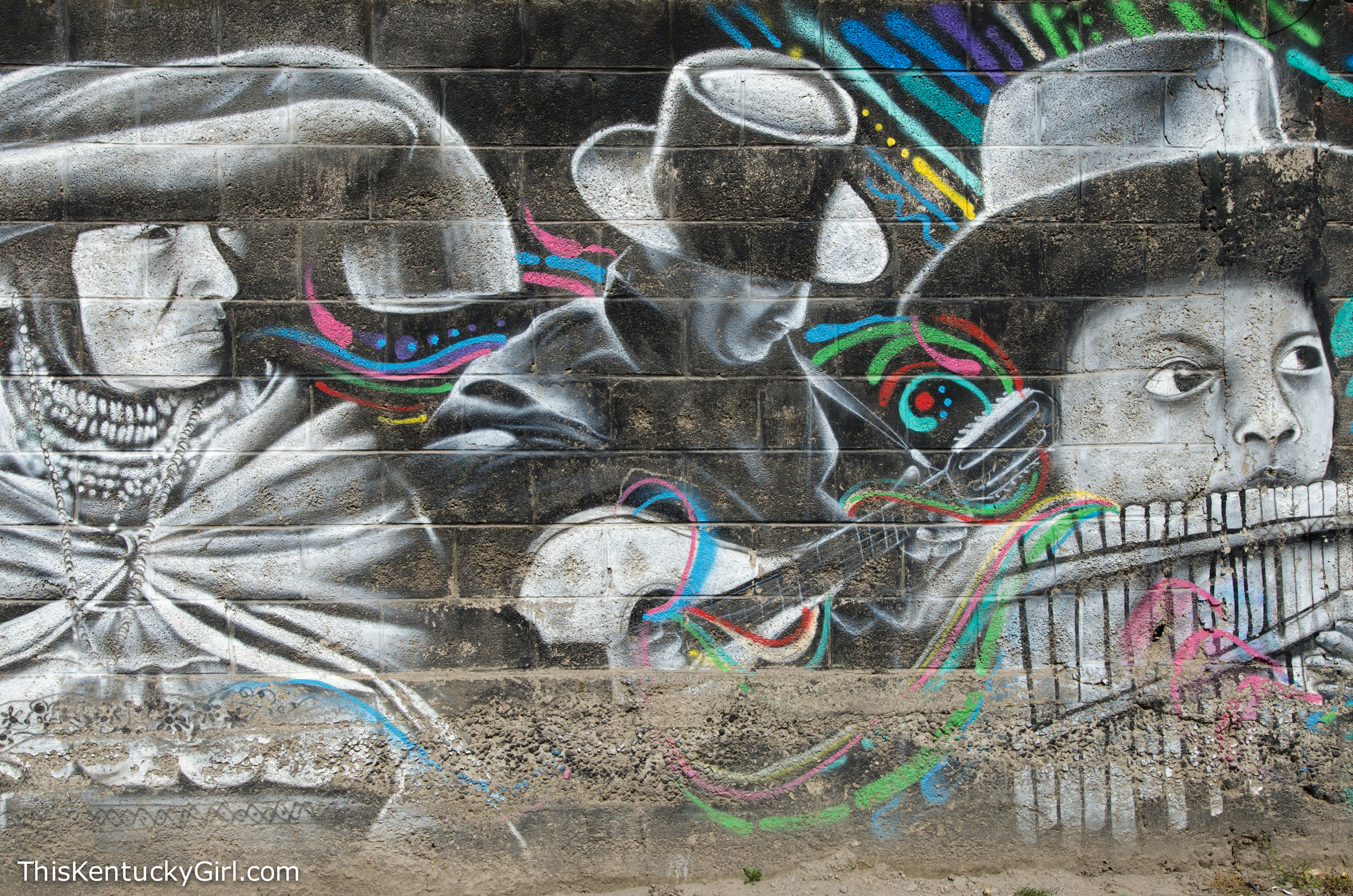
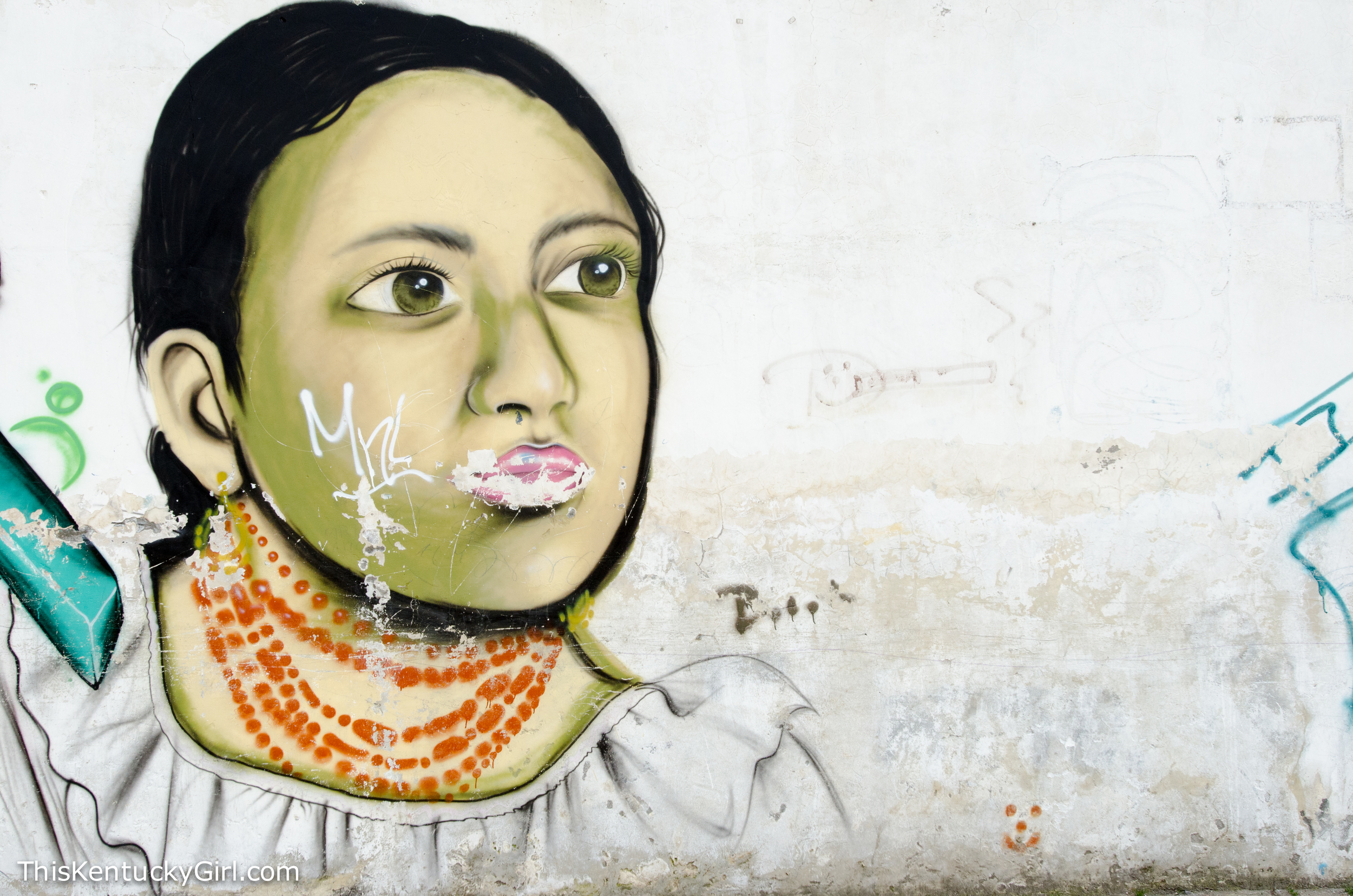
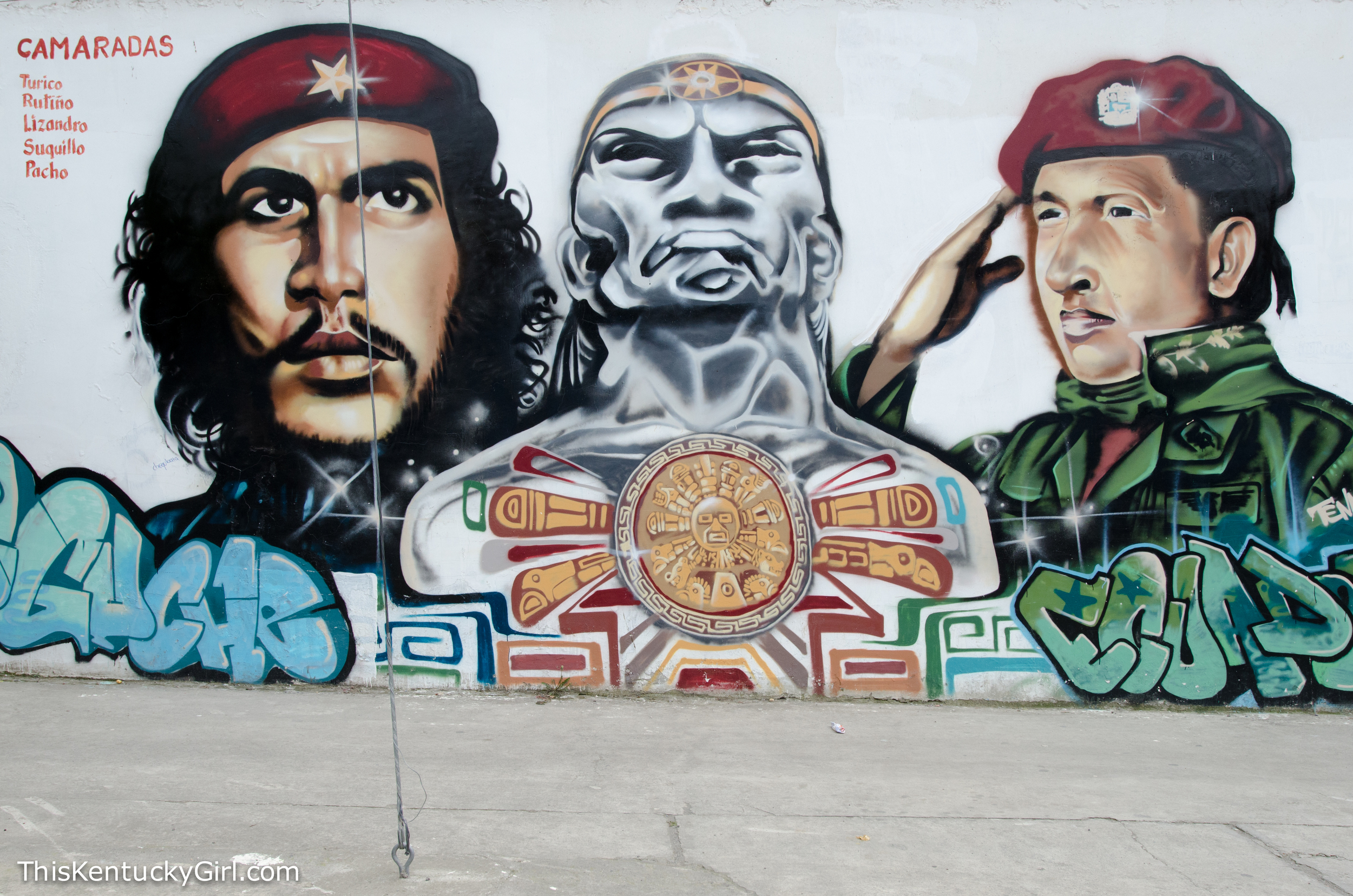
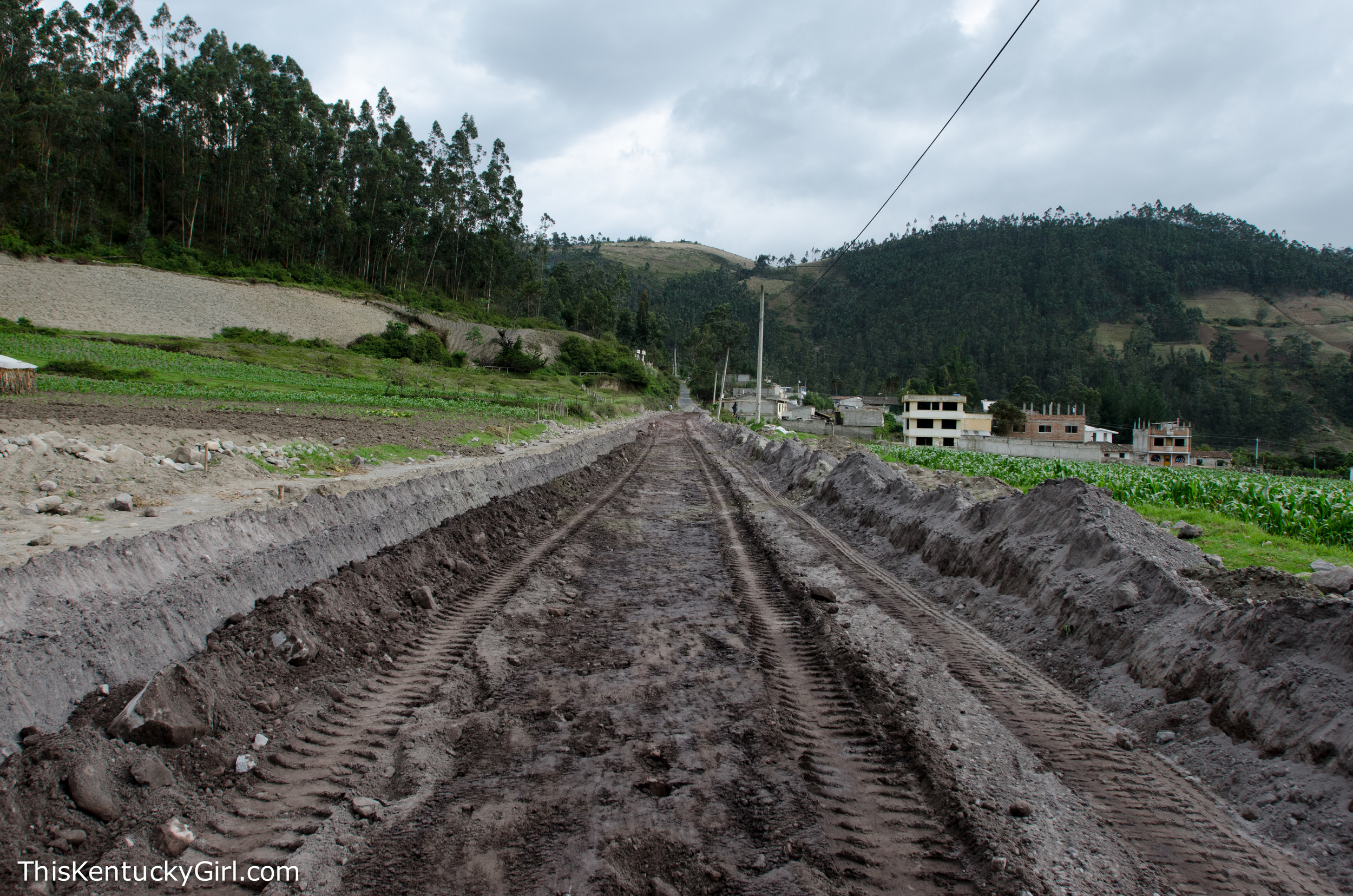
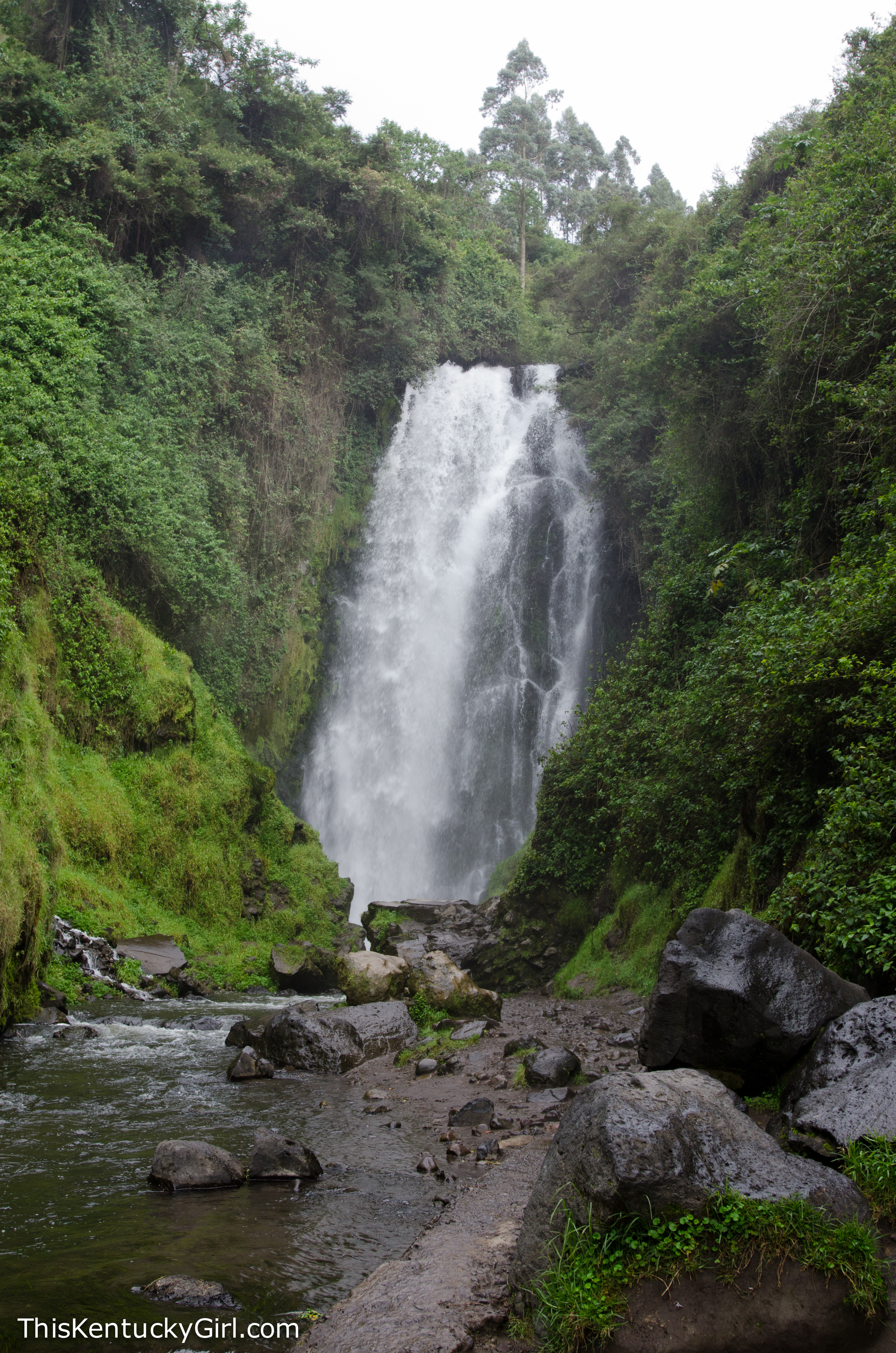
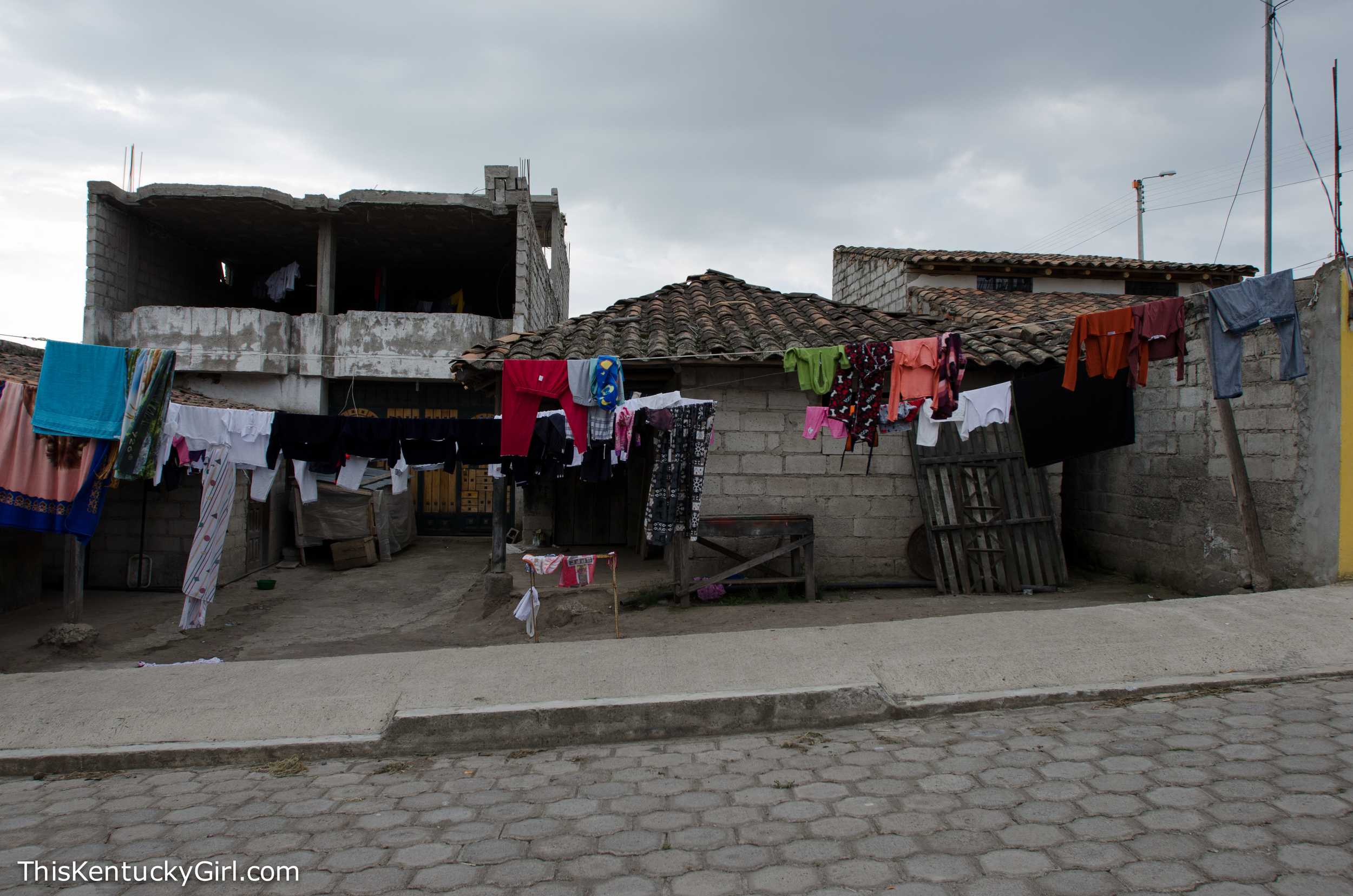
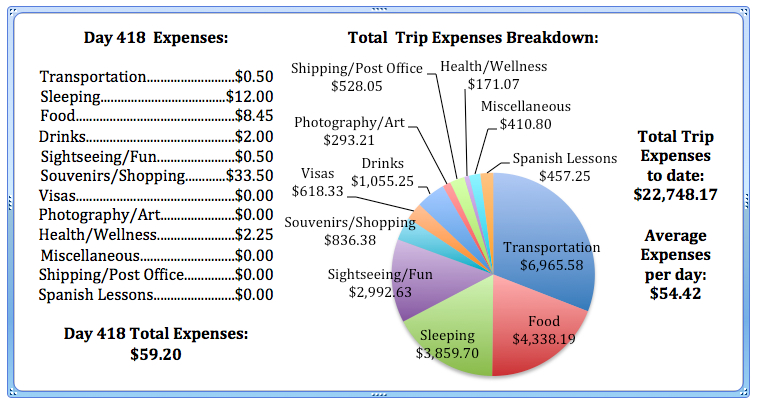
The outskirts of the market offered quieter streets which made it relatively easy to sneak back to our room to drop off our newly acquired art before trekking out of Otavalo to check out the Peguche waterfall. We took a public bus and got off at the suggested stop, but we felt a little lost wandering around a much smaller town with no clear signs of a waterfall.
We were also told it was a weaving capital of the area surrounding Otavalo, but we quickly found out this simply meant there was one shop with very pricey rugs and tapestries inside. I was more impressed with the street art. This little tiny two street town with hardly anyone walking through it offered up some incredible murals. Even in Otavalo offered equally impressive public art.
Even though we asked for directions, walking down this dirt road we were a little skeptical if we were heading in the right direction. There weren’t any signs, no other tourists, so when some locals walked past us, we simply followed them and were relieved when we found ourselves at the entrance of the park and winding trail towards the waterfall. Anxious to catch a public bus back into Otavalo before dark, we didn’t linger in the park too long.
Instead, we walked to yet another small town that wrapped itself around the outskirts of Otavalo in search for the bus or perhaps a taxi if we were lucky. Eventually we were told where we could go, and before the sandflies consumed my exposed legs entirely, we were back on a bus towards Otavalo and heading back to Taco Bello (yep, you read correctly) for another taco salad.